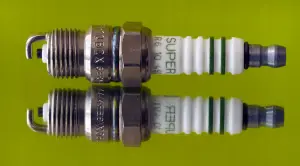Changing spark plugs is a simple task that can improve the performance and efficiency of your vehicle.

Spark plugs are essential components that ignite the air-fuel mixture in the engine. Over time, they can become worn out and thus need to be replaced.
Here are the 10 steps to change spark plugs:
- Consult your owner’s manual to determine the type and size of spark plugs your vehicle requires.
- Locate the spark plugs. They are typically found near the top of the engine or on the side of the engine block.
- Disconnect the negative terminal of your vehicle’s battery to prevent electrical shock.
- Remove the spark plug wire or ignition coil by gently pulling it straight off the spark plug.
- Use a spark plug socket and a ratchet to loosen and remove the old spark plug.
- Clean the spark plug hole with a wire brush to remove any debris or deposits.
- Inspect the old spark plug for any signs of wear or damage.
- Install the new spark plug by hand, and then make sure it is seated properly in the spark plug hole.
- Use the spark plug socket and ratchet to tighten the new spark plug to the proper torque specification as specified in your owner’s manual.
- Reattach the spark plug wire or ignition coil and reconnect the negative terminal of your vehicle’s battery.
It is important to properly torque the new spark plug to avoid damaging the thread or causing the spark plug to become loose. So using the correct spark plug socket and a torque wrench will ensure proper installation.
https://whatcanu.com/what-are-the-best-ways-to-protect-my-pet-from-poison/But if you are unsure of the proper procedure or tools to use, it is recommended to consult a professional mechanic or refer to your vehicle’s owner’s manual. Regularly changing spark plugs can improve the performance and efficiency of your vehicle, as well as prevent potential issues or damage.






